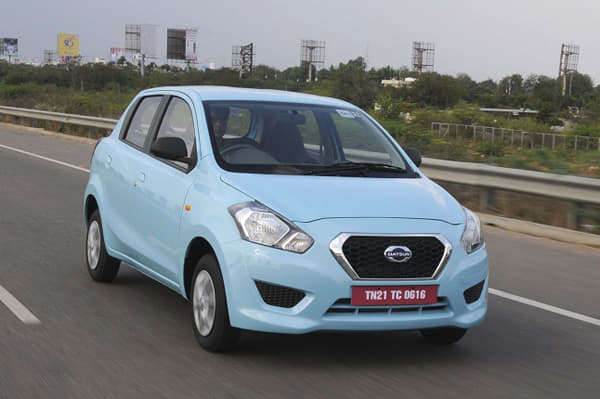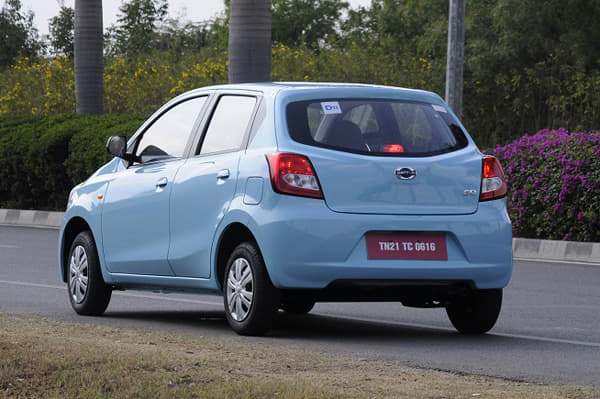This is the new Audi RS7 super-sedan, and it’s hard not to speak about it in superlatives. Here’s why. With 552bhp, it’s the most powerful production Audi in the world, and that includes every variation of the mid-engined R8 supercar available. It gets to 100kph from a standstill in 3.9 seconds, despite weighing just shy of two tonnes. And it does all this with a 4.0-litre engine, making for a stupendous specific output of 138bhp per litre – that’s sportsbike territory. It’s also gorgeous to look at and properly luxurious too. On the surface, it’s hugely impressive, and you really have to get under its sinister matte grey skin to see what makes it tick, and that’s just what we’ve done.

There’s no debating that this is a fantastic looking car. In fact, while the standard Audi A7 – on which this is based – could be accused of looking a little hunch-backed from some angles, the RS7 balances things out with its flared sills, massive front air intakes, huge tailpipes and those slim-spoked 21-inch wheels. Then there are details like the black honeycomb grille, silver wing mirrors and pointy chin spoiler that only add to the drama. With its lower, more aggressive stance, it seems that, styling-wise, this is the car the A7 was always meant to be.

The cabin of our test car swaps leather for suede and wood panels for carbon-fibre trim. The seats, even at the rear, are heavily sculpted, body-hugging chairs wrapped in quilted alcantara, and there’s also an RS gearlever and a sporty, flat-bottomed steering wheel. That aside, however, it’s standard A7 fare, which is a good thing. The quality is all but faultless, the superb wraparound dashboard isn’t too high set and the 3D-effect dials with their massive trip computer screen are a pleasure to behold. The front seats, though a tad snug, are very comfortable and fully electric, though they don’t actively support you in the corners like in some other super-sedans, and the front passenger misses out on seat memory. You have to sink down into the deep-set rear seats, but once in here, the headroom is not nearly as bad as that sleek roofline would lead you to believe. Still, the RS7 is not one for the chauffeur-driven, and is also a strict four-seater. It’s full of kit befitting a luxury car though, like a Bang & Olufsen audio system, four-zone climate control and satellite navigation, to name a few. The option of a full-length panoramic sunroof instead of the standard-size one would not have gone amiss though.
Despite all this, what dominates the RS7 experience is its engine. Like the S6 we drove a few months ago, it too uses a 4.0-litre twin-turbocharged, direct-injection V8, but this one has had its wick turned up a fair bit. This also means it gets the clever cylinder-deactivation tech that lets it run on four cylinders when not under a full load to help save fuel, and there’s a stop-start function too, but make no mistake, this is a performance car; drive it like it's meant to be driven and it will guzzle fuel.

The engine barks to life when you push the start button and even at idle, there is a distant rumble, more so when you set the exhaust to Dynamic mode. There’s no Launch Control system on the RS7, but you don’t really need it. The power delivery is instantaneous and ferocious, and our test equipment verified that it actually managed to match Audi's claimed 3.9sec 0-100kph time! Astonishing for such a large vehicle. Though this is an all-wheel-drive car, the front end goes light at first with the weight transfer as the power is distributed. This was, however, partially down to the less-than-perfect road surface, on which the wide, 275-section front tyres struggled to find grip. But keep your foot pinned and the car will respond by pinning your head to the seat, and keeping it there till you lift off, the engine bellowing away all the while. The tacho needle races to the 6,800rpm redline and cogs are swapped almost seamlessly, making it seem like one endless surge. And though the performance is relentless, it's not brutal like in a supercar. By default, the RS7 is limited to 250kph, but on request (and for a fee), Audi will raise it for you to 280kph – a speed we have no doubt it is easily capable of, given enough tarmac.

The gearbox is the eight-speed, ZF-sourced, torque-converter automatic, and though it works fantastically in most conditions, it’s only under really high-performance driving that some shortcomings start to appear. For instance, it doesn’t let you manually downshift to the redline as some of the sporty double-clutch gearboxes do. In automatic mode, however, overtaking manoeuvres are easy and feel very rewarding – in kickdown, 40-100kph takes 3.24sec and 20-80kph a scant 2.7sec!
As ever, leaving the engine, gearbox, suspension and steering in their most comfortable settings is the best recipe for city use. However, when you do want to drive quickly, you should use the car’s customisable ‘Individual’ setting and leave the steering and suspension in Comfort mode, even if you do turn all the rest up to Sport or Dynamic. The suspension in Dynamic mode makes the car too fidgety and jiggly for any situation, save perhaps a track, and you feel every last crack on the tarmac. The Comfort setting strikes a good balance between stiffness and comfort, and considering this car runs on 21-inch wheels and 275/30 R21 tyres, the ride in this mode is just superb; firm, but with a nice soft edge. Sure, big, sharp-edged bumps will catch it out, but that is to be expected on tyres that have such a low profile; choosing the standard 275/35 R20 wheel and tyre combination might help. Overall though, for a performance car, the ride is really something special, and easily the best in this segment.

Also worthy of commendation is the refinement. Considering the size of those wheels and tyres, hardly any road noise comes into the cabin. Even the engine, provided it isn’t in Sport mode and you aren’t wringing its neck, remains reasonably subdued, and it’s only when you venture near the RS7’s top speed that you might get a hint of wind whistle through the frameless windows.
Though the steering can be set to Dynamic as well, all that does is add more weight to it. The RS7's steering is inherently numb and doesn't offer a lot of feedback, and because of this, you might as well leave it in Comfort, which is the lightest of the settings. Around corners, the RS7 has an abundance of grip, thanks to the Quattro system, and body roll is contained admirably as well. There’s so much torque at all revs that it’s actually tricky to modulate through corners, and you have to be measured with your throttle inputs. Ultimately, however, with 552bhp and 71.3kgm so easily accessible, you’ll be thankful for the handling safety net that the AWD offers.

At a price of Rs 1.27 crore (ex-showroom, Delhi) for the Audi RS7, it’s difficult not to make a comparison with our other favourite super-sedan, the similarly priced Mercedes E 63 AMG, but we’ll save that for another time. As it stands, however, the RS7 is a hugely capable, very stylish and truly luxurious four-door coupé that will blow you away with its performance, but also surprise you with its comfort and refinement. And though the price is a bit steep, it more than has the performance to match.
Gavin D'Souza






































